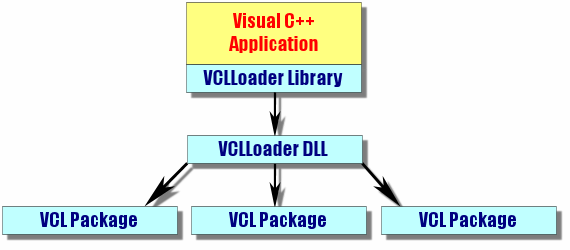

VCL for Visual C++ is a technology that allows Visual C++ developers to use most of the native Delphi and C++ Builder components without the need to rewrite them or to write any wrapper classes or ActiveX wrappers. The technology allows a direct usage of any VCL package in Visual C++. By using this technology you can write a complex Visual C++ application with just a few lines of code.
VCL for Visual C++ supports fully the OpenWire project .
The technology is a Copyright of Boian Mitov. If you are interested in obtaining a license to use the technology, please contact us directly at mitov@mitov.com.
The technology is used in the VideoLab, SignalLab, AudioLab, VisionLab and PlotLab VCL libraries.

The Visual C++ application will use a set of C++ classes to create instances of component proxies.
The library will call a VCLLoader DLL. The VCLLoader will load one or more VCL packages, and will create instances of the VCL components.
There are two levels of support in the current version of the technology.
Level 1 support:
Advantages:
Disadvantages:
Suitable for :
Visual C++ Example:
|
// Create a button at 10, 10 with size 100, 30
// Set the caption to “Demo Button”
// Set an OnClick event: |
Level 2 support:
Advantages:
Disadvantages:
Suitable for :
Visual C++ Example:
|
// Create a button at 10, 10 with size 100, 30
// Set the caption to “Demo Button” //
Component1.OnClick.SetEvent( this, &CMyDialog::OnClickHandler, ); |